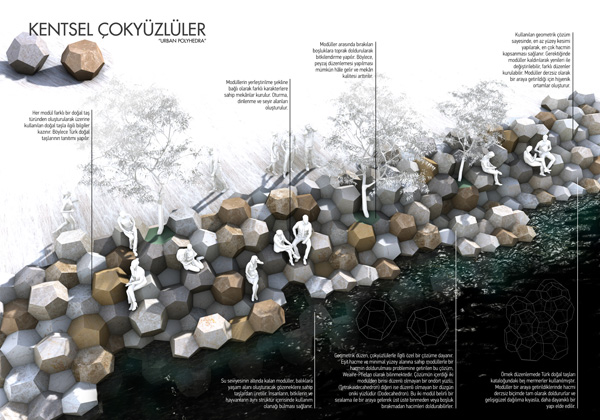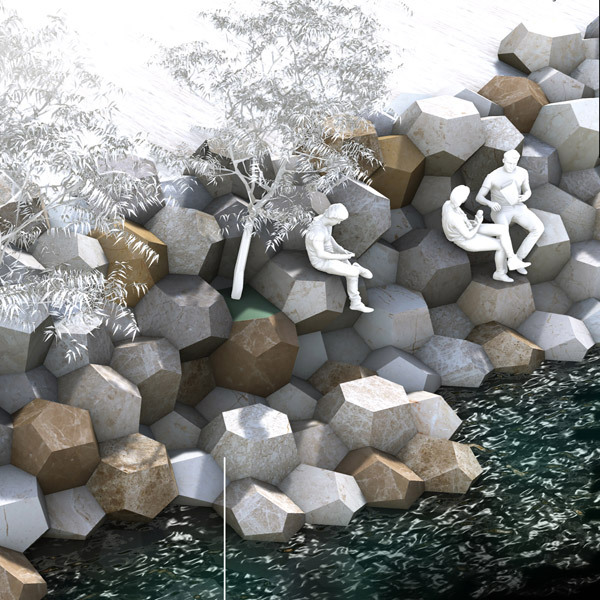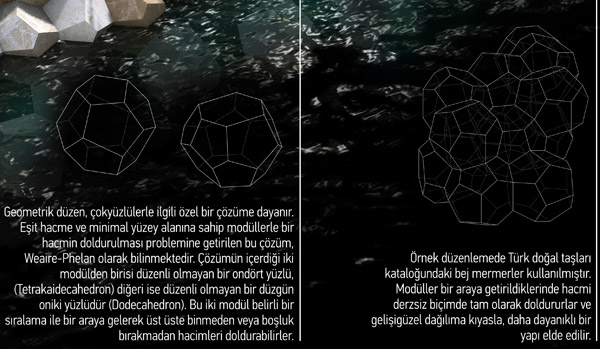Urban Polyhedra
This is a competition entry on the innovative uses of natural stone. Urban Polyhedra aims to organize the natural stone usage, especially on the shores. In the current implementation of this system, random blocks are placed to prevent landslides on the urban coastal areas, but restrict the interaction of the citizens with the shore, and destroy the spaces for sea creatures, and vegetation. Thus, this random placement makes it difficult to interfere with a design/arrangement. Citizens try to reach the sea and find a breathable sitting surface. However, apart from a few bushes that come to life by chance, there are no trees or plants under which people and animals can cool off.
The Urban Polyhedra project brings a new interpretation of the natural stones used in landfills. Through design, it approaches plants and sea creatures more sensitively. The main idea of design is the diversity and metamorphosis generated by a simple geometric system. Therefore, the three-dimensional patterns formed in a given geometric arrangement meet different functions, create reservoirs for plants and establish new living spaces for sea creatures.
The geometric system of this project is based on the Weaire-Phelan structure, which I examined here 5 years ago. The poster is a simple Rhino 6 screenshot (not a render) in the rendered viewport. The performance of this system seems to fit the needs of this project. For more information about the association which organized the design contest, you can click here, or here. This project did not win any prize in the competition. Maybe I could have done a better job in explaining its potentials and production feasibility.











